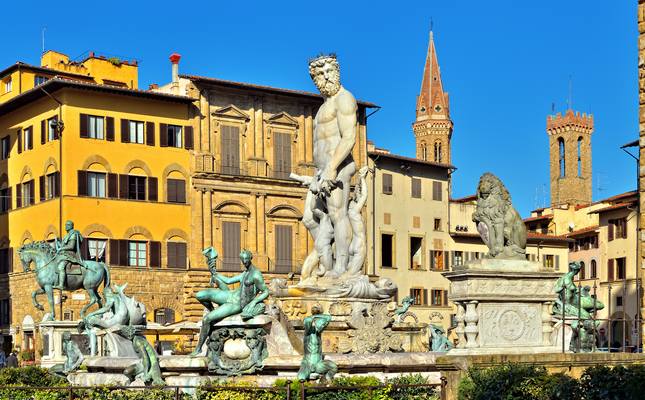[fshow photosetid=72157629845585118]
I completed one of those online IQ tests once during the ephemerally nonsensical college days, just for a laugh to see who would score higher, my flatmate or I. He’ll never let me forget that it was he who scored four points higher. I don’t remember what the scores were (obviously due to my inadequate smarty points), but I do remember the results pointing out my supposed strengths in the ‘spatial’ and ‘mathematical’ fields. I say “supposed” not as a faux self-deprecating gesture, but rather because in one of these fields I humbly admit I am terrible — spatial gauging, as the multiple dents on my car will reveal. Regardless of whether I’m talented in either, I consider myself above par when it comes to the admiration the two.
Maths + Space = Ar(t)chitecture
There are several reasons why I love architecture. One, it encapsulates a period in history, like a choir singing harmonies of the political, social, religious, and artistic notes of a moment in time. The stories told by buildings give a sense of purpose to a monument, such as the Taj Mahal mausoleum in India or the Sagrada Família church in Barcelona, the latter still yet to be finished and with its story still unfolding. Artistic interpretation and expression through mere bricks and mortar is generally impressive, as with the genius to harness mathematical laws to build structures that are to this day still standing, some millennium onwards, outliving their designers and builders. They basically inspire in me an awe for mankind, a feeling of pride that’s not often remembered with global news only selling the opposite.
Effusive Uffizi
Florence is considered to be the cradle that gave birth to the Renaissance cultural explosion. Where else to get a crash course and feel for the significance of the movement than the Uffizi Gallery? For those who have been to Uffizi, it is surprising that it doesn’t even rank top 20 of the world’s most visited museums — at 1.65 million visitors in 2010, it is shadowed even by the National Palace Museum in Taiwan, which boasts nearly double that number in the same year, much less The British Museum at over 5.84 million and the Louvre at a staggering 8.5 million in the same year.
Funding Art
Uffizi was not purposely built as a museum, rather it was meant to be — as the translation would explain — offices for the Florentine magistrates under the Duke Cosimo I de’ Medici. One quick side note about the House of Medici which I found interesting — the family produced four Catholic Popes and two queen consorts of France. What went in the closed corridors of power, I don’t claim to know, but the Medici’s were also known to be patrons of the arts, and part of the evolution of Uffizi from office to gallery came about when spaces were slowly transformed into display areas for their private collection of paintings and sculptures. “Do you think they were patrons by choice, knowingly cultivating and protecting the arts?” my partner asks while I was reading out my findings. I pondered before replying my doubts. Probably just vanity and an attitude of “this is what rich people do”, methinks.
A Beautiful Lie
It is very inspiring to visit a place where art houses art, and the journey starts before you get to the (unfortunately long) queues from the Piazza della Signoria, the L-shaped square that is the heart of the city. The town hall, Palazzo Vechhio, the arches of Loggia die Lanzi, and the sculptures littered around the square all set you up for the bombardment of artistic masterpieces awaiting once you are done gazing at the buildings. Our favorite structures during the visit were the Uffizi, the domed Basilica di Santa Maria del Fiore, the fortress-palace Palazzo Vecchio, the Basilica di San Miniato al Monte, and the sculptures found at the Boboli Gardens. The main party-pooper is time — a day is really not sufficient to explore any of these places in great detail. Pablo Picasso once said, “We all know that Art is not truth. Art is a lie that makes us realize truth, at least the truth that is given us to understand”. In that case, Florence is a city of lies that visitors should take up the challenge to interpret for themselves.
Exploring old cities by foot is the best way to see the sights at a leisurely pace. Though walking is hardly considered strenuous exercise, after a few days of relying on biped transportation, a spa treatment is in order (if you need an excuse). Here are some of Tuscany’s top spas:
- Fonteverde Natural Spa (www.fonteverdespa.com): Located admist the Sienese hills, chose from one of seven spa pools, including one that combines colours and aromas to create “liquid sound”.
- Grotta Guisti Spa (www.grottagiustispa.com): Enjoy a steam bath at the on-site thermal grotto, a natural cave with hot underwater underground lake.
- Soul Space (www.soulspace.it): Chose a therapy from the sweet life — Chocolate, wine, or olive oil.
- Mulino di Hotel Firenze (www.mulinodifirenze.com) — With only capacity for two guests, make a date to relax amidst the grinder rooms of a former mill.
- Firenze Spa (www.preview.fourseasons.com/florence/spa/) The only hotel spa in the heart of town, try one of the massages using ingredients sourced from the surrounding countryside — organic Lavender, Florentina iris flowers, or the unique Chianti wine massage.

